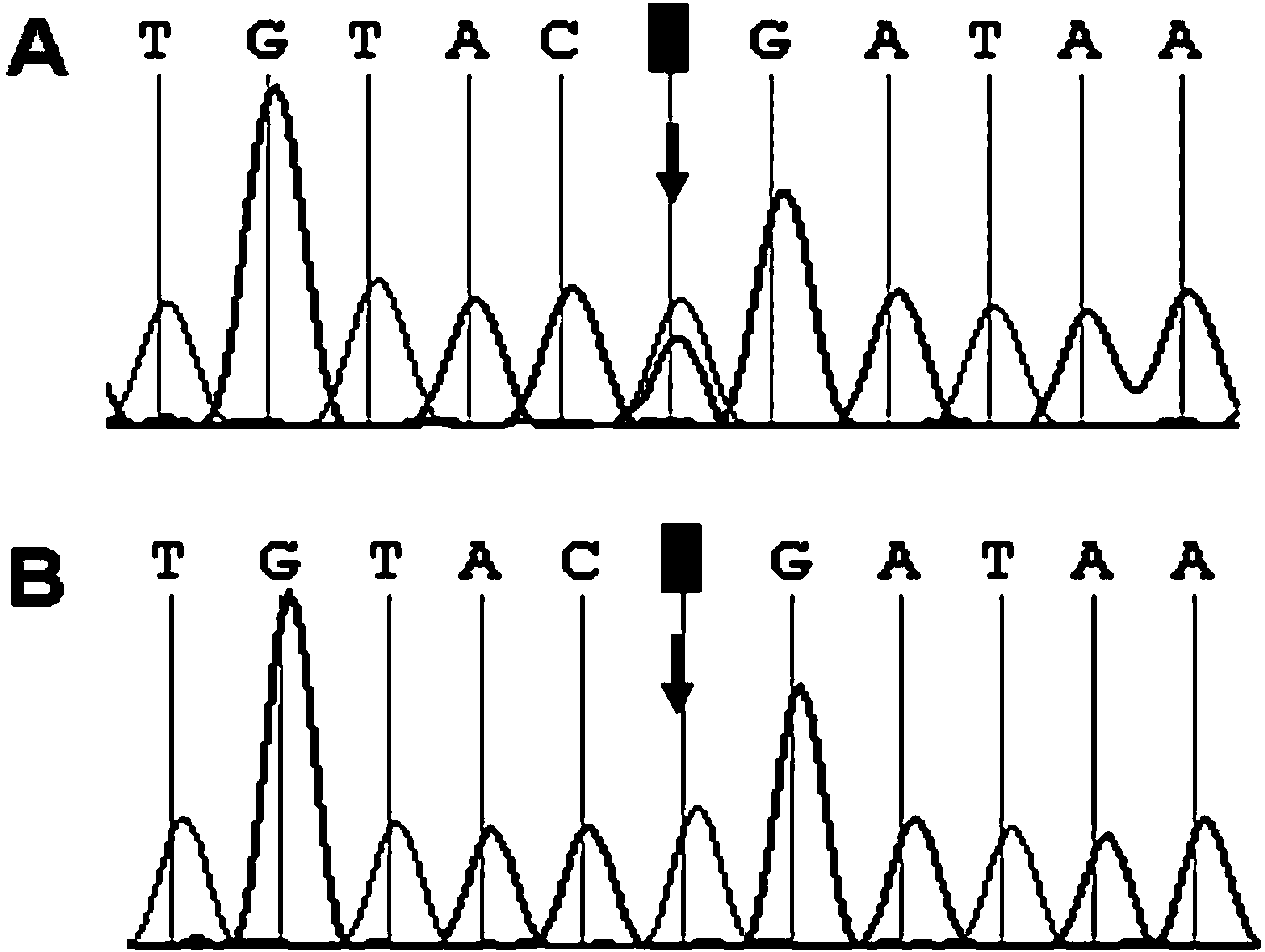Diagnostic product for detecting Axenfeld-Rieger syndrome
A technology for syndromes and products, applied in DNA/RNA fragments, recombinant DNA technology, determination/examination of microorganisms, etc.
- Summary
- Abstract
- Description
- Claims
- Application Information
AI Technical Summary
Problems solved by technology
Method used
Image
Examples
Embodiment 1
[0029] Example 1: Screening of mutation sites of MMRN1 gene from Axenfeld-Rieger syndrome families
[0030] 1. Extract genomic DNA from peripheral blood:
[0031] In line with the relevant national policies and regulations, and on the basis of the consent of the sampling subjects, 2-5 ml of peripheral venous blood from the first Axenfeld-Rieger syndrome family member was drawn, placed in an EDTA anticoagulation tube, and frozen at -80 °C for future use; After the EDTA anticoagulant was thawed at room temperature, 500 μL was taken into a centrifuge tube, an equal volume of TE (pH 8.0) was added, mixed well, centrifuged at 4°C and 10,000 rpm for 10 minutes, and the supernatant was discarded.
[0032] Add 180 μL TE, 20 μL SDS (10%), 8 μL proteinase K (10 mg / ml), mix well, and place in a 37° C. water bath overnight. Remove the sample from the water bath and briefly centrifuge the sample to pellet. An equal volume of Tris-saturated phenol (about 300 μL) was added to the reaction ...
Embodiment 2
[0075] Example 2: Screening for mutation sites of MMRN1 gene in patients with congenital sporadic Axenfeld-Rieger syndrome
[0076] Collection of sporadic patients with Axenfeld-Rieger syndrome: The sporadic patients with Axenfeld-Rieger syndrome with a clear diagnosis were collected in Shandong Eye Research Institute and Qingdao Eye Hospital.
[0077] Extraction of peripheral blood genomic DNA:
[0078] 2-5ml of peripheral venous blood of the sporadic Axenfeld-Rieger syndrome patients and their mothers were drawn respectively, put into EDTA anticoagulation tubes, and frozen at -80 ℃ for future use; after the cryopreserved EDTA anticoagulation was thawed at room temperature, 500 μL was taken and placed in EDTA anticoagulation tubes. In a centrifuge tube, the conventional phenol-chloroform method described in Example 1 was used to extract genomic DNA from the peripheral blood of each member of the family.
[0079] PCR amplification of the target fragment: Reaction conditions a...
PUM
 Login to View More
Login to View More Abstract
Description
Claims
Application Information
 Login to View More
Login to View More - R&D
- Intellectual Property
- Life Sciences
- Materials
- Tech Scout
- Unparalleled Data Quality
- Higher Quality Content
- 60% Fewer Hallucinations
Browse by: Latest US Patents, China's latest patents, Technical Efficacy Thesaurus, Application Domain, Technology Topic, Popular Technical Reports.
© 2025 PatSnap. All rights reserved.Legal|Privacy policy|Modern Slavery Act Transparency Statement|Sitemap|About US| Contact US: help@patsnap.com



